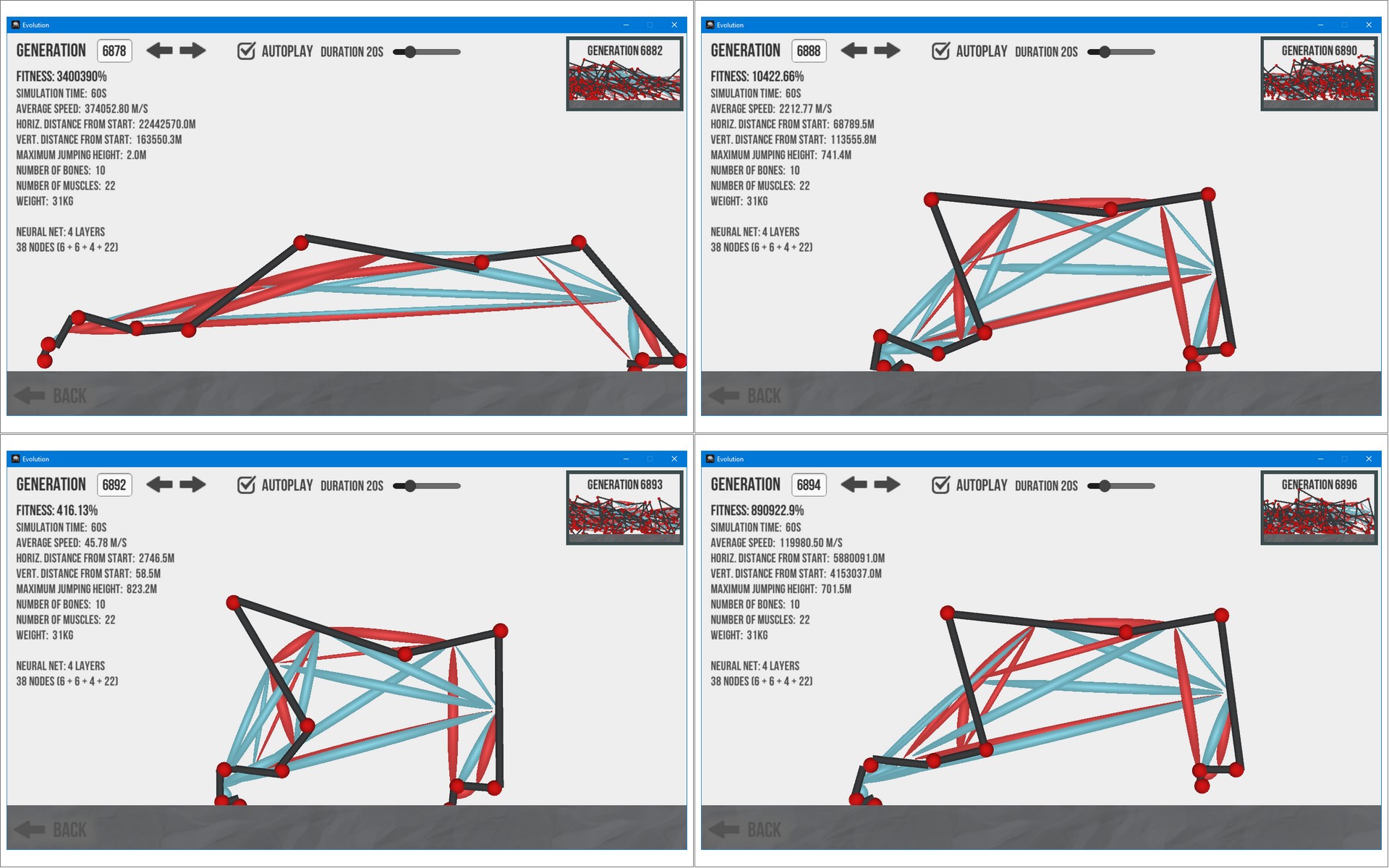On the picture you posted the horizontal distance also seems to be way outside of the normal range. It would be nice if you could send me the saved simulation file (stored in the Application.persistentDataPath: https://stackoverflow.com/questions/44419658/location-of-application-persistentd...) to keiwan.donyagard@gmail.com. I'll probably have time to work on this project again in roughly a month from now.
Thanks for confirming the improved memory management!
Now, while I still believe that a regular creature is highly unlikely to reach 100% fitness without any bugs helping, if you want to keep your creatures to improve beyond 100% fitness, you could also just remove the upper clamping limit of 1.0 when the fitness values are calculated inside of each Brain implementation (it should be within the respective Update call). That way you could keep the MAX_DISTANCE value at whatever it is, which would allow you to compare your creatures' performance to designs made by other people who are running an unmodified version of the simulator. As far as I can remember, fitness values above 1.0 should not cause any issue with any of the remaining code.
By the way, now that you had to remove TextMesh Pro, does the Russian and Portuguese text in the help center still show? I think I read somewhere that TextMesh Pro is now part of Unity itself but I haven't had any time to try to port this project to the 2018 version yet.


